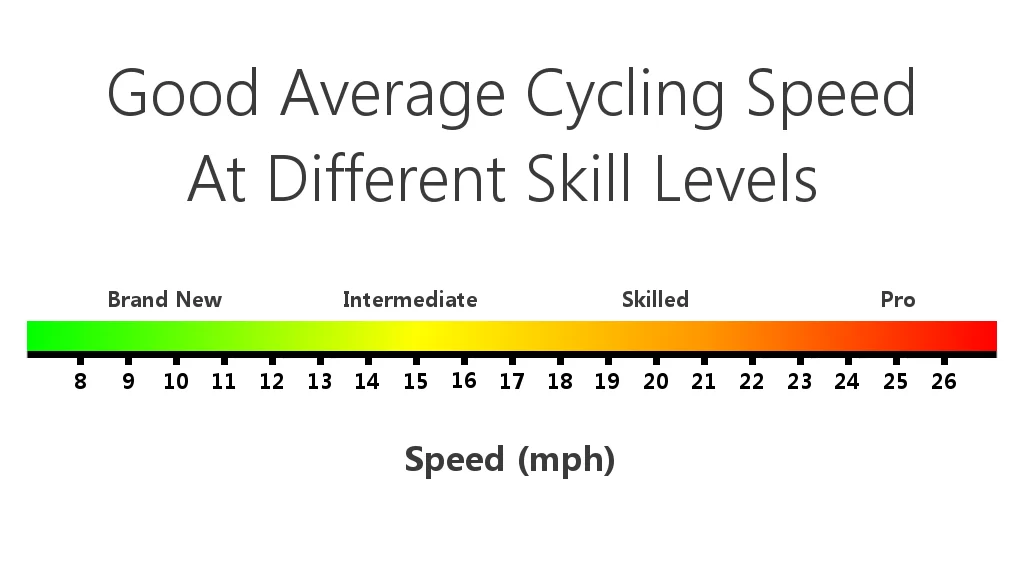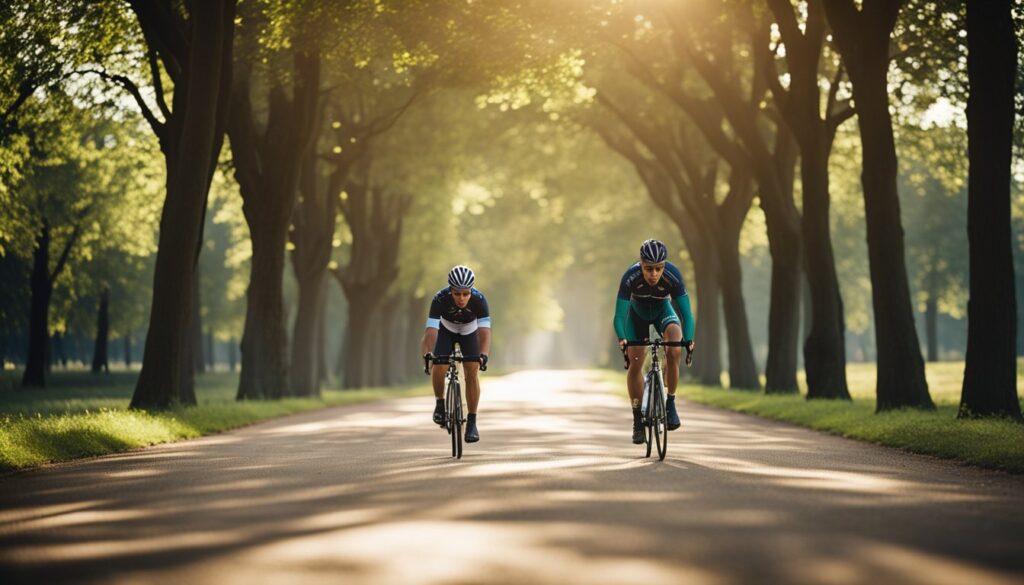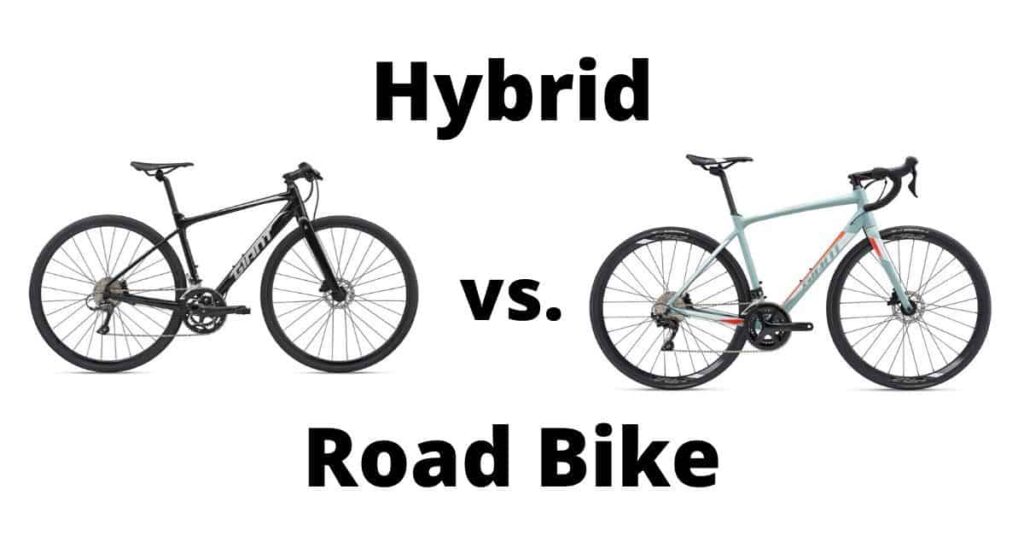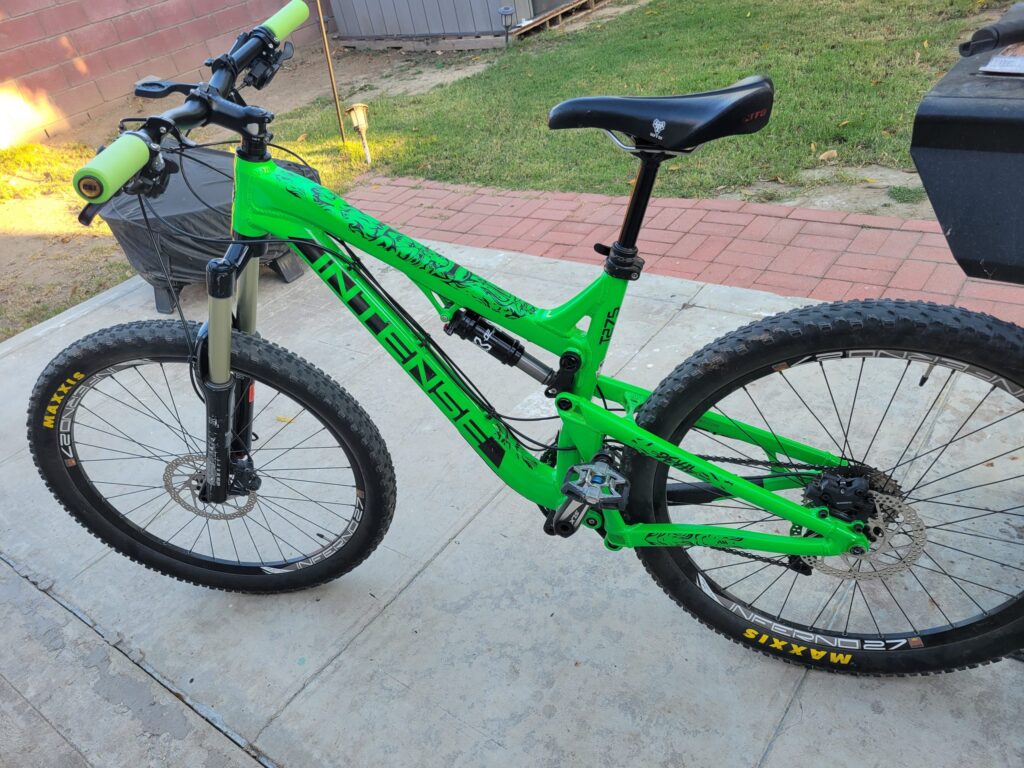A good average speed on a road bike ranges from 12 to 18 mph. This varies based on fitness level, terrain, and experience.
Riding a road bike is thrilling and challenging. Many cyclists wonder about the ideal speed to maintain. Factors like wind, road conditions, and personal fitness affect speed. Beginners might ride slower, while advanced cyclists push for higher speeds. Understanding what constitutes a good speed helps set realistic goals.
It also ensures a safe and enjoyable riding experience. Whether cycling for leisure or competition, knowing your average speed can guide training and improve performance. This guide explores how to determine a suitable speed for your road biking adventures.
Ideal Road Bike Speed
Finding the ideal road bike speed is like discovering your personal rhythm on the road. You might wonder, “What is a good average speed on a road bike?” The truth is, there’s no one-size-fits-all answer, as it varies greatly depending on several factors. Let’s delve into what affects your speed and what you can typically expect.
Factors Affecting Speed
Your road bike speed is influenced by a myriad of elements. Your physical fitness is a primary factor. The more you train, the better your endurance and speed. Weather conditions also play a crucial role. Wind resistance can slow you down, while a sunny day might boost your energy levels.
Equipment is another key player. A lightweight bike designed for aerodynamics can significantly enhance speed. Terrain is equally important—flat surfaces allow for faster cycling, whereas uphill climbs require more effort and reduce speed.
Have you considered your cycling technique? Improving your pedaling efficiency can make a noticeable difference. Small adjustments in posture and gear usage can translate into faster rides.
Typical Speed Range
For many recreational cyclists, an average speed between 12-15 mph is common. If you’re just starting out, you might find yourself comfortably cruising at this pace. As your skills and stamina improve, you might push towards 16-20 mph.
Experienced cyclists often aim for speeds above 20 mph, especially during group rides or races. But remember, these numbers aren’t set in stone. Your speed will vary depending on the day’s conditions and your personal state.
Curious how you stack up against others? Consider joining a cycling club. You’ll get a firsthand look at different speeds and styles, which can inspire you to refine your own approach.
Ultimately, the “ideal” speed is the one that challenges you without causing distress. So, what’s your ideal road bike speed? Are you ready to test your limits and enjoy the ride?

Credit: roadbikebasics.com
Influence Of Terrain
Different terrains impact road biking speed. Flat roads allow faster rides, while hilly areas can slow you down. Average speed varies based on the terrain, affecting overall performance.
Riding a road bike is an exhilarating experience, and the average speed you maintain can be influenced by various factors. One of the most significant elements is the terrain you choose to tackle. Whether you’re cruising on flat roads or conquering challenging hills, the landscape you face will play a crucial role in your cycling journey. Ever wondered how terrain affects your biking speed? Let’s dive into the specifics.
Flat Roads
Flat roads can be a dream for cyclists looking to maintain a steady and fast pace. On these surfaces, you often find yourself pedaling smoothly without much resistance. This allows you to focus on your technique and stamina.
A good average speed on flat roads ranges between 15 to 20 mph for most amateur cyclists. Of course, wind can be a game-changer, either pushing you forward or holding you back. Have you ever felt like you’re flying with a tailwind? It’s one of cycling’s simple joys.
Flat terrain is perfect for practicing your cadence and improving your endurance. Even small changes, like adjusting your body position, can lead to noticeable speed increases. Consider using this terrain to refine your skills and build your confidence.
Hilly Routes
Hilly routes present a different kind of challenge that can significantly affect your speed. Climbing demands more effort and energy, often slowing your pace to an average of 10 to 14 mph. But the reward? The thrilling descent that follows every climb.
Tackling hills requires a strategic approach. Shifting your gears appropriately and pacing yourself can make a huge difference. It’s a test of both physical and mental endurance. Have you found yourself at the top of a steep hill, feeling the triumph of conquering it?
The varied terrain also provides an excellent opportunity to build strength and improve your climbing skills. Hills can be daunting, but they offer valuable lessons in resilience and perseverance. Next time you face a hilly route, embrace the challenge and see how it transforms your cycling experience.
Choosing your route with an understanding of how terrain impacts speed allows you to set realistic goals and enjoy your ride. Whether you’re on flat roads or hilly paths, remember that each ride is an opportunity to learn and grow as a cyclist. What terrain will you conquer today?
Impact Of Weather
When you’re out on your road bike, the weather can be your best friend or your biggest challenge. It’s fascinating how weather conditions can dramatically influence your average speed. This is especially true when you’re trying to hit a new personal best or simply enjoy a leisurely ride. Have you ever noticed how a gentle breeze can feel like a hurricane when you’re pedaling hard? The elements can make every ride a unique experience.
Wind Conditions
Wind can either propel you forward or hold you back. When you’re riding with the wind at your back, your speed increases effortlessly. It’s like having an invisible push, and you might find yourself smashing your speed records without even realizing it.
But, a headwind is a different story. It’s like pedaling through molasses. You exert more energy just to maintain your usual speed. If you’re caught in crosswinds, it might even affect your balance and trajectory. Consider using wind forecasts to plan your rides. Why not use the wind to your advantage?
Temperature Effects
Temperature plays a critical role in your biking performance. On hot days, your body heats up quickly. You might feel sluggish, and your speed can drop as your body works harder to stay cool. Staying hydrated becomes crucial. It’s not just about drinking water; think about electrolytes too.
Cold temperatures, on the other hand, can stiffen your muscles and lower your efficiency. However, some cyclists find cooler weather invigorating, pushing them to pedal faster. Proper layering of clothing can help maintain your body warmth without overheating. Have you ever thought about how your gear impacts your ride in different temperatures?
Remember, the weather is an ever-changing factor in your biking journey. Next time you head out, consider how these elements might influence your speed. How can you use them to enhance your ride? Embrace the challenge, and see how your average speed evolves with the seasons.
Bike Type And Setup
Choosing the right bike type and setup can significantly impact your average speed on a road bike. Your bike isn’t just a machine; it’s an extension of you, influencing your ride’s comfort and efficiency. Whether you’re aiming to break personal records or simply enjoy a smooth ride, understanding the nuances of your bike type and setup is crucial.
Road Bike Variations
Not all road bikes are created equal. From lightweight racing bikes to more robust endurance models, each type serves a different purpose. Racing bikes are typically lighter and designed for speed, perfect for those looking to push their limits on flat surfaces or gentle slopes. Endurance bikes, on the other hand, offer more comfort for long rides, often featuring a more relaxed frame geometry. Consider your riding goals and terrain; a racing bike might be your best bet for shorter, faster rides, while an endurance bike could be ideal for longer, leisurely journeys.
Tire And Gear Adjustments
Adjusting your tires and gears can be a game-changer for your average speed. Tire width and pressure play a significant role in your ride’s smoothness and speed. Narrow tires with higher pressure reduce rolling resistance, allowing you to glide faster on pavements. However, wider tires at lower pressures offer more stability and grip, which can be beneficial on rough surfaces.
Gearing is equally important. Fine-tuning your gear ratios to match your typical riding terrain can optimize your performance. If you often encounter hills, a bike setup with lower gears will help you maintain speed while climbing. Conversely, higher gears are perfect for flat terrains where you can afford to pick up the pace. Have you ever adjusted your gears only to find your ride smoother and faster? The right adjustments can transform your biking experience.
Understanding these elements can lead you to a more enjoyable and efficient ride. What adjustments will you make to enhance your cycling adventure?
Rider Fitness And Experience
Rider fitness and experience greatly impact average speed on a road bike. A cyclist’s physical condition plays a crucial role. Experienced riders usually pedal faster. They understand how to manage energy and maintain pace. Fitness affects stamina and endurance. A fit rider rides longer and faster. Experience helps in navigating different terrains efficiently. It aids in adapting to road conditions and weather.
Training Levels
Training levels affect a cyclist’s speed. Beginners often ride at a slower pace. They are building their strength and stamina. Intermediate cyclists have better control and endurance. Their average speed increases with consistent practice. Advanced riders train regularly. Their fitness levels are high, allowing faster speeds. Structured training plans improve speed and endurance. These plans focus on building strength and technique.
Skill Development
Skill development enhances riding efficiency. Learning proper bike handling is essential. It involves controlling the bike smoothly in different situations. Cornering and braking skills improve speed. They help maintain momentum without losing control. Riders should practice gear shifting. Shifting gears correctly conserves energy and increases speed. Understanding road safety rules is vital. It ensures safe and uninterrupted riding.

Credit: www.road-bike.co.uk
Nutrition And Hydration
Staying hydrated and nourished is key for road biking. Average speeds often range from 12 to 15 mph. Proper nutrition and hydration fuel your body for optimal performance, helping maintain a steady pace on various terrains.
Nutrition and hydration play a critical role in determining your average speed on a road bike. The right fuel helps you maintain energy levels, stay focused, and push through challenging sections. Without proper nutrition and hydration, even the most experienced cyclists can find themselves struggling.
Pre-ride Meals
What you eat before hitting the road can set the tone for your entire ride. A balanced meal rich in carbohydrates and moderate in protein can provide the energy you need. Think oatmeal with a banana or a whole-grain toast with peanut butter.
Timing is crucial. Eating about 2-3 hours before your ride allows your body to digest and absorb nutrients. If you’re in a rush, opt for a light snack like a granola bar 30 minutes before you start.
Skipping meals can leave you feeling sluggish and reduce your ability to maintain a good speed. Make sure to fuel up properly to keep your performance on track.
During-ride Hydration
Staying hydrated is vital for maintaining your speed and performance. Dehydration can lead to fatigue and reduced concentration, making it hard to keep a steady pace.
Carry water bottles on your ride. Aim to drink small amounts regularly rather than waiting until you feel thirsty. This helps prevent dehydration and keeps your energy levels up.
Consider adding electrolytes to your water if you’re on a long ride or it’s particularly hot. Electrolytes help replace essential salts lost through sweat, keeping you balanced and energized.
Reflect on your hydration habits. Are you drinking enough to support your cycling goals? Prioritizing hydration can be a game-changer for maintaining a good average speed.
Technology And Equipment
Technology and equipment play a key role in road biking. With advancements, cyclists can track and improve their performance. The right gear can help gauge average speed effectively.
Cycling Computers
Cycling computers offer real-time data. They measure speed, distance, and time. These devices attach to the bike’s handlebars. Many models also include GPS. This helps in tracking routes accurately. Some advanced versions connect to mobile apps. This allows for detailed analysis post-ride. Cyclists can set targets and track progress. A cycling computer is a useful tool for any level of rider.
Wearable Tech
Wearable tech is gaining popularity among cyclists. Devices like smartwatches and fitness bands are common. They track heart rate and calories burned. Some models even measure speed and elevation. This data helps in understanding physical performance. Wearables are convenient and often multifunctional. They sync easily with phones and computers. This makes data sharing and analysis simple. They are perfect for those who prefer minimal bike setup.

Credit: www.manjaresdelmundo.es
Safety Considerations
Finding a safe average speed on a road bike involves considering traffic, road conditions, and your own skill level. Always wear a helmet and follow traffic rules to stay safe while cycling. Maintain awareness of your surroundings to adjust speed as needed for safety.
Riding a road bike can be exhilarating, especially when you feel the wind against your face as you zip through scenic routes. However, prioritizing safety is essential. With speed comes the responsibility to stay aware of potential hazards and ensure you’re protected. Let’s explore some key safety considerations to keep you safe on your ride.
Traffic Awareness
Being aware of traffic is crucial when biking on roads. You need to keep an eye out for vehicles, pedestrians, and other cyclists.
Consider your surroundings at all times. Are there cars turning without signaling? Is there a bus stopping ahead?
Make eye contact with drivers when possible to ensure they see you. This simple gesture can prevent accidents.
Protective Gear
Wearing the right gear is essential for your safety. A helmet is non-negotiable; it protects your head from severe injuries.
Choose bright clothing to make yourself visible, especially in low-light conditions. Reflective strips can make a huge difference.
Gloves and padded shorts provide comfort and protection during longer rides. They may not seem essential, but they can prevent blisters and soreness.
How often do you check your gear before a ride? Taking a moment to ensure everything is in top condition can save you from unexpected issues.
Safety isn’t just about avoiding accidents—it’s about enjoying your ride with peace of mind. Stay aware, gear up, and pedal on!
Frequently Asked Questions
What Is The Good Average Speed On A Road Bike?
A good average speed for a road bike ranges from 15 to 18 mph for casual riders. Experienced cyclists often maintain 20 to 25 mph. Fitness level, terrain, and weather conditions influence speed. Regular training and proper bike maintenance can improve performance.
Always prioritize safety while cycling.
Is 20 Mph On A Road Bike Good?
Yes, 20 mph is a good speed for a road bike. Many cyclists consider it a strong average. This speed requires good fitness and technique. Casual riders often average 12-15 mph, while experienced cyclists aim for 20 mph or higher.
Consistent training can help improve speed over time.
What Is The 75 Rule In Cycling?
The 75 rule in cycling suggests that 75% of your training should be at or below 75% of your maximum heart rate. This approach helps improve endurance and aerobic capacity, allowing cyclists to maintain a steady pace over longer distances without overexerting themselves.
Conclusion
Finding the right speed on a road bike matters. It balances comfort and challenge. Beginners may start at 12-15 mph. More experienced riders often aim for 15-20 mph. Terrain impacts speed; flat roads are faster. Weather also plays a role.
Wind can slow you down. Cycling is about enjoying the ride. Personal progress is key. Don’t stress over numbers. Focus on enjoying the journey. Listen to your body. Build strength and endurance over time. Ride regularly for improvement. The best speed is one that feels right.
Keep pedaling and have fun.



